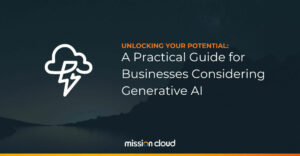Being competent in the digital world goes well beyond basic comprehension. Workers today need to have a wide range of digital skills, all of which are necessary to succeed in an increasingly digital workplace.
As the way we work changes, the degree of literacy required for some occupations is already shifting. It’s anticipated that in the next five years, 90 percent of the workforce will require at least basic computer skills, such as using email or company software. In the next 2-3 years, over 50 percent will need to be able to use, configure and build digital systems.
Those who lack digital literacy may soon find themselves at a huge disadvantage. Encouraging digital literacy in your workplace is important to ensure the entire organization is productive, competitive, and prepared for the demands of a tech-driven future.
The Four Principles of Digital Literacy
According to Elizabeth Marsh, director of Digital Work Research Ltd, organizations looking to undertake a digital transformation need to spend time and resources on developing a digitally skilled workforce. For Marsh and other digital researchers, digital literacy doesn’t require a mastery of every computer skill. Rather, it lies in the awareness, mindset, and ability individuals have to use digital tools and facilities confidently.
Through her research summarized in The Digital Workplace Skills Framework, Marsh explores her findings according to four key principles of digital literacy.
1. Using the digital workplace
In almost every modern workplace, the tools we use to complete our daily tasks are distinctly digital. Despite their ubiquitous nature, a recent report from the OECD, titled Skills for a Digital World, found that over 40 percent of those using software at work every day do not have the skills required to use digital technologies effectively.
To combat this discrepancy, Marsh’s framework recommends a four-step process (establish, safeguard, optimize, and innovate) to lay foundational digital skills and build upon them throughout an organization. Breaking this process down according to different personal skill levels allows those in leadership positions to better facilitate individual learning. It also ensures the entire business is on board and engaged, encouraging greater productivity alongside an awareness of risk factors and safeguards.
2. Process and apply
Knowing how to guide others to identify, evaluate, absorb, and apply information is a set of skills vital to technology-rich work environments. The amount of time people spend looking for information to complete tasks is staggering. For instance, 21 percent of productivity is lost through finding and managing information, with managers spending an extra two hours per day on average searching for information.
For Marsh, the role of IT Leadership is to provide their employees with the right skills to be able to search for the information they need quickly and efficiently. Along with the supply of the right structure for searching, Marsh insists that employees also need to be literate in evaluating and assimilating information from various sources to properly complete tasks. Digitally literate employees are able to identify patterns, themes, and trends in information and apply them effectively to their work — a pivotal skill in the fast, modern-day workforce.
3. Create and connect
While searching and locating information is important, creativity plays a key component in any digitally agile workplace. Regardless of the industry, the ability to create engaging content, connect it with an audience, and inspire collaboration are all vital skills for any active and digitally-focused organization.
Marsh’s digital literacy framework emphasizes the following:
- increasing employees’ content generation skills across a range of formats
- using the most appropriate tools and technology across the organization to suit the audience, context, and channel
- building communication skills to connect with and relate to others in the workplace, virtual or otherwise
- collaborating with others using the digital workplace to share knowledge and achieve common tasks or goals
Since nearly 15 percent of time is spent on inefficient communications, understanding how to generate interesting content confidently, fluently, and collaboratively is a critical skill for all employees.
4. Think and adapt
Researchers have found that continuous disruptions can lead to difficulty in focusing on complex problem-solving and creative idea generation. Employees in a digital workplace are constantly bombarded with information, platform notifications, and work influxes from a range of different streams and tools.
In Marsh’s final framework chapter, she stresses that a key part of digital literacy is knowing how to tailor the digital and physical environment to support focused and attentive work. For Marsh, this last set of digital literacy skills (attend, flex, learn, reflect) are as connected to employee well-being as they are to technical competency.
The more self-aware employees are of how they individually respond to and interact with digital environments, the more capable they are of structuring their own learning to improve their overall work experience.
Benefits of Digitally Literate Teams
While the cost of training can be a barrier for many organizations, those who spend the time and money on raising their ‘digital IQ’ reap the rewards.
One key benefit experienced by organizations is higher employee satisfaction. By focusing on developing organization-wide digital skills, no employee feels left behind or forgotten. Leaders who provide opportunities for broad, well-rounded digital literacy inspire greater confidence among their staff. After all, confident employees are happy and engaged employees.
Along with employee satisfaction, general productivity also improves from heightened digital literacy. Findings suggest that workers are wasting 22 minutes per day dealing with IT-related issues and that they may be losing as much as 8 percent of ‘productive time’ due to poor IT resources or inadequate digital skills. Imagine the short and long-term improvements that would come from gaining back close to 25 minutes of productive time per day.
You can start to reap the rewards of a digitally literate workforce by studying how to transition digital literacy in your workplace. Enhance your IT leadership skills today by undertaking a master in information technology leadership online.
This content is provided in collaboration with Deakin University. It may have been influenced by the sponsor and does not necessarily reflect the views of the ECT News Network editorial staff.











































